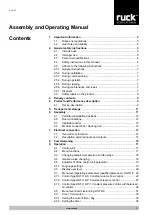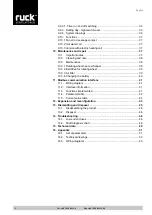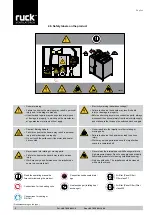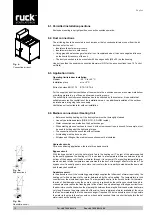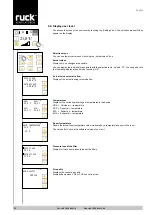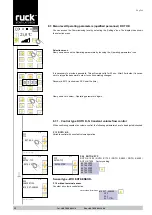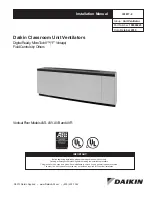
14
1
3
2
4
5
6
English
Tel. +49 7930 9211-0 Fax +49 7930 9211-150
•
The unit may only be operated with the correct overcurrent protection.
•
This must be established by a qualified electrician.
•
The recommended protection is shown in the enclosed wiring diagram..
7.1. Overcurrent protection
Typ
Fuse protection
ROTO K 1050 V
3 x 10 A
ROTO K 1700 V
3 x 10 A
ROTO K 2800 V
3 x 16 A
ROTO K 4200 V
3 x 16 A
Fig. 7:
Connection compartment
(1) Controller board
(2) Cover for terminal box
(3) Cable duct
Fig. 8:
Cable glands
(4) Cable gland power supply
(5) Cable gland sensors / actuators
(6) Cable gland Control unit
7.2. Description external inputs and outputs
Unit enabling
The unit can be switched on and off with an external potential-free contact (see wiring diagram). An
external voltage must never be applied to this connection. The control system would be destroyed. Any
devices providing a potential-free contact (e.g. central building control system) can be used to control the
unit. This contact must be securely isolated from interference voltages because otherwise dangerous
conditions might occur in the event of a fault.
The extra-low voltage control cables must be laid separately from the mains cables.
Motion detector
A motion detector can be connected to the controller. When the contact is closed, the device chang-
es to the operating mode “Intermittent ventilation” with the preset follow-up time according to pa
-
rameter 30.
External, potential-free contact.
Circulation pump enable
A circulation pump can be connected to the controller (see circuit diagram). If heating is required,
the heating valve is opened by the controller and the circulation pump output is activated. Any pump



